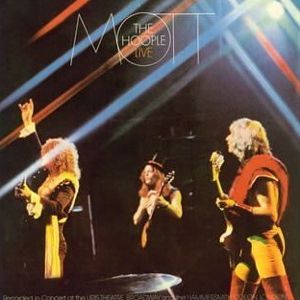She didn’t like the image Paul concocted for her first album, so for Earth Song/Ocean Song Mary was determined to express her own tastes. Caught up in the English folk scene, she recruited Ralph McTell on acoustic guitar, along with Dave Cousins of the Strawbs on guitar, and Danny Thompson of Pentangle on standup bass, and hand-picked songs both familiar and unrecorded by the likes of McTell, Tom Paxton, and Cat Stevens. With more restrained string arrangements than those on Post Card, the result fits alongside contemporary albums by Nick Drake, and even dare we say the chamber elements of Nico’s Chelsea Girl.
That chamber sound is prominent on “International”, sometimes overshadowing the gently picked guitars but never her voice. “There’s Got To Be More” is an immediate improvement, with strident acoustics, that terrific Danny Thompson bass, and a defiant message in her delivery. There’s a gentle switch to “Silver Birch And Weeping Willow”, dominated by a Kingston Trio-style banjo, before “How Come The Sun” gets an excellent Visconti arrangement, and even phases the vocals on the middle section! The title track (the first half, anyway) rolls along like a leaf in a breeze, eventually landing on the ground.
With a harsh acoustic guitar thrashing unresolved chords, “Martha” fades in side two with a portrait of a neighborhood gossip justifiably ostracized by the community, which of course only compounds the problem. Skittering strings add to the unsettledness. Ralph McTell’s “Streets Of London” is legendary in the UK, and of course Mary’s take is as lovely as any. Cat Stevens’ “The Wind” is probably the most familiar song to Americans, but the arrangement is at first too literal, and then distracts from the simplicity of the original. “Water, Paper And Clay” redeems it, starting with just her lovely voice and building slowly to a pub anthem. “Ocean Song” completes the album, the same chords as “Earth Song” with different words and extended fade for an artful finale.
Mary was proudest of this album, and felt justified to leave the pop circus after its release. Without any real promotion, Earth Song/Ocean Song became easily forgotten until the ‘90s, when Apple finally started their non-Beatle reissue campaign. The initial CD release had no bonus tracks, but the 2010 version added both sides of a contemporary single (the overwrought “Let My Name Be Sorrow” and Ralph McTell’s more staid “Kew Gardens”) along with “When I Am Old One Day”, an outtake from the original LP first heard on a mid-‘90s compilation. (Another B-side, the mildly jaunty “Jefferson”, was included only in the digital download, alongside “Let My Name Be Sorrow” in French and, believe it or not, Japanese.)
Mary Hopkin Earth Song/Ocean Song (1971)—3
2010 CD reissue: same as 1971, plus 3 extra tracks
:format(jpeg):mode_rgb():quality(90)/discogs-images/R-1825500-1281050060.jpeg.jpg)
:format(jpeg):mode_rgb():quality(40)/discogs-images/R-1149091-1488768177-8615.jpeg.jpg)


:format(jpeg):mode_rgb():quality(90)/discogs-images/R-13277725-1551453855-8248.jpeg.jpg)
:format(jpeg):mode_rgb():quality(90)/discogs-images/R-3716454-1488213034-3351.png.jpg)